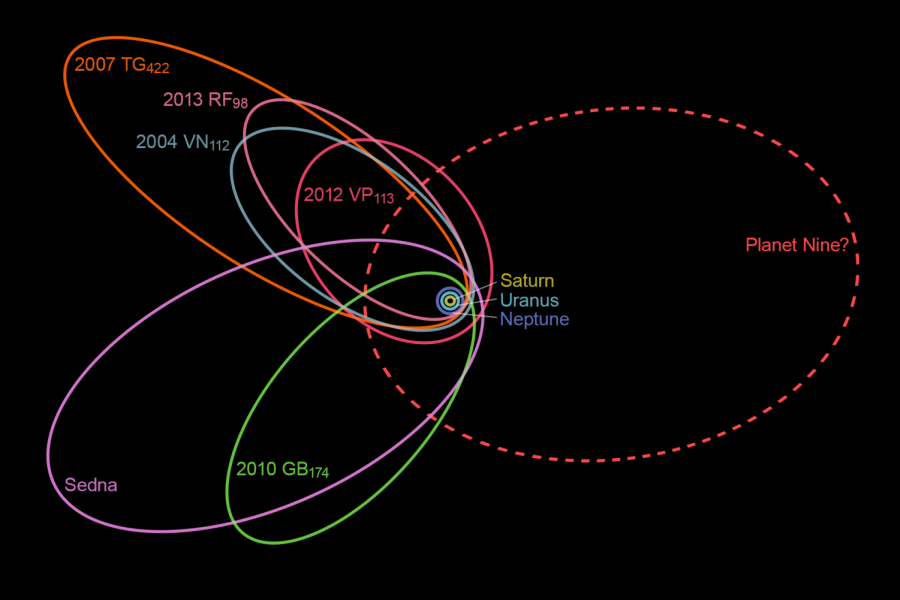Signs of Undiscovered Planets in the Solar System
October 9, 2018
Deep in the confines of the solar system, a small object slowly orbits the sun. This newly discovered object, which has earned the nickname “The Goblin,” is distant from the rest of the planets in the solar system. Its strange behaviors might indicate the existence of “Planet X/Planet 9,” a large planet that has been theorized to lurk in the outermost parts of the Oort Cloud. Do the behaviors of The Goblin indicate the existence of more planets outside the solar system? This newly discovered object might have the answer.
Scott Sheppard (Carnegie Institution for Science), Chadwick Trujillo (Northern Arizona University), and David Tholen (University of Hawaii) first discovered The Goblin in 2015 with the Subaru Telescope, and have since been trying to retrace its orbit. On October 2nd, the research group was able to trace the object successfully, and have released a research paper on its behaviors.
The inner Oort Cloud is a region in the solar system that surrounds the farthest parts of the solar system. Previously, the dwarf planets Sedna and 2012VP113 have been the only objects to exist in the inner parts of the Oort Cloud, a region that hovers within the Kuiper belt. However, the discovery of The Goblin has shown there might be many more objects in this region. Its distance from the sun is approximately 2,300 times further than the distance from the earth to the sun and is twice as long as the distance from the sun to Pluto. Due to the vast distance of The Goblin from the sun, it takes nearly 40,000 years to complete a full orbit.
Astronomers have estimated that The Goblin is invisible to us 99% of the time, so tracking its orbit was extremely lucky. In fact, it has been estimated that over 2,000,000 of these objects with similar mass are orbiting in the inner regions of the Oort cloud, but are too faint to be detected. By tracking the orbits of The Goblin, Sedna, and 2012VP113, astronomers have noticed a correlation that may indicate signs of “Planet X.” The three objects align somehow, indicating that there may be a separate massive planet controlling their orbits. The astronomers tested this with simulations and showed that by placing Planet X into the orbits of the dwarf planets, all the objects became stable, as described from observations.
With this in mind, the possibility of finding another planet in our solar system is likely, and the recent observations of other objects can confirm the existence of the hypothetical “Planet X.” It is even possible for other planets to exist inside the Oort Cloud. Our current technology, however, is unable to track these relatively small objects. It is somehow humbling to know that although astronomers are observing objects far away from us in space, we don’t even completely understand what lurks inside the pockets of our own solar system.

















































































































































